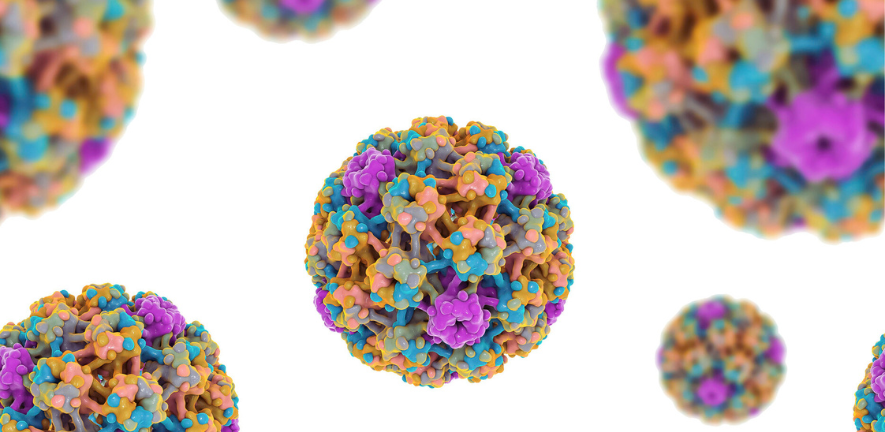
Submitted by Livia Harriman on Wed, 02/07/2025 - 13:23
Cervical cancer is a global health threat, and at the heart of its origin lies a microscopic agent: high-risk human papillomaviruses (HR-HPVs). But how do these viruses hijack our cells, and what causes their gene expression to spiral into cancer-causing chaos? Let’s explore the molecular tug-of-war between virus and host as revealed by new research from the University of Cambridge.
The Hidden Danger: High-Risk HPV and the Cervix
Over 95% of cervical cancers are caused by persistent infections with HR-HPV types, especially HPV16 and HPV18. These viruses don’t just float around waiting to cause cancer. They carefully target a specific area of the cervix known as the transformation zone (TZ). In this dynamic region, two types of cells (squamous and columnar) meet and remodel under hormonal influence.
Key to this vulnerability are reserve cells nestled in cervical crypts. These stem-like cells lie just beneath a thin layer of columnar cells, providing HPV with easy access—no wound is required.
Tight Control: How HPV Keeps a Low Profile
HPV doesn’t start a fight right away. Instead, it silently infects basal or reserve cells, expressing just enough genes to persist without triggering an alarm from the immune system. This stealth mode is enabled by:
-
Chromatin regulation: Viral DNA is wrapped tightly to suppress unnecessary gene expression.
-
Viral proteins E2 and E8^E2: These act like gene silencers, preventing the cancer-driving genes E6 and E7 from going rogue.
-
Host transcription factors, such as YY1 and p63, help regulate viral activity.
When Regulation Breaks Down: The Road to Cancer
Cancer doesn’t begin with infection—it begins with deregulation.
Over time, persistent infection and microenvironmental cues in the TZ can break HPV’s internal control mechanisms. This unleashes the oncogenes E6 and E7, which:
-
Disable tumour suppressors like p53 and pRb
-
Disrupt normal cell cycles, leading to unchecked proliferation
-
Causes genomic instability, paving the way for mutations and cancer
A major trigger? HPV genome integration into the host DNA often disrupts the gene (E2) that normally keeps E6 and E7 in check.
The Cryptic Culprit: Cervical Crypts as Cancer Hotspots
Cervical crypts are emerging as the primary site for neoplasia. These gland-like structures:
-
Concentrate reserve cells—ideal HPV targets
-
Have low immune surveillance, making viral persistence easier
-
Respond to hormones like estrogen—known to enhance E6/E7 activity
Research has also identified transcription factors like FOXA1, highly active in crypts and capable of driving E6/E7 expression, especially in the presence of estrogen. The result is a perfect storm for viral deregulation and early-stage lesions.
From Virus to Tumor: The Final Transformation
Once E6 and E7 are unchained, the cell is on a path toward malignancy:
-
Genome integration leads to persistent oncogene expression
-
Immune evasion ensures infected cells are not cleared
-
Epigenetic changes and miRNA disruption push cells deeper into transformation
Ultimately, this deregulation silences the virus's reproductive cycle—HPV stops making new viruses and instead becomes a cancer driver.
Why This Matters
Understanding how HPV regulates and then deregulates its genes gives us insight into:
-
Why some infections clear while others cause cancer
-
Why the transformation zone is so vulnerable
-
Potential therapeutic targets (like FOXA1 or estrogen pathways)
It also underscores the importance of HPV vaccination and regular cervical screening—especially since some mechanisms of transformation are silent and site-specific.
Final Thoughts
This detailed exploration into HPV’s life cycle and gene expression control shows that the virus isn’t simply aggressive—it’s strategic. It adapts to its environment, lying low until conditions allow it to transform a host cell into a cancer cell.
The transformation zone may be small in size—but it’s a molecular battleground with high stakes. And now, thanks to continued research, we’re learning how to fight back smarter.

